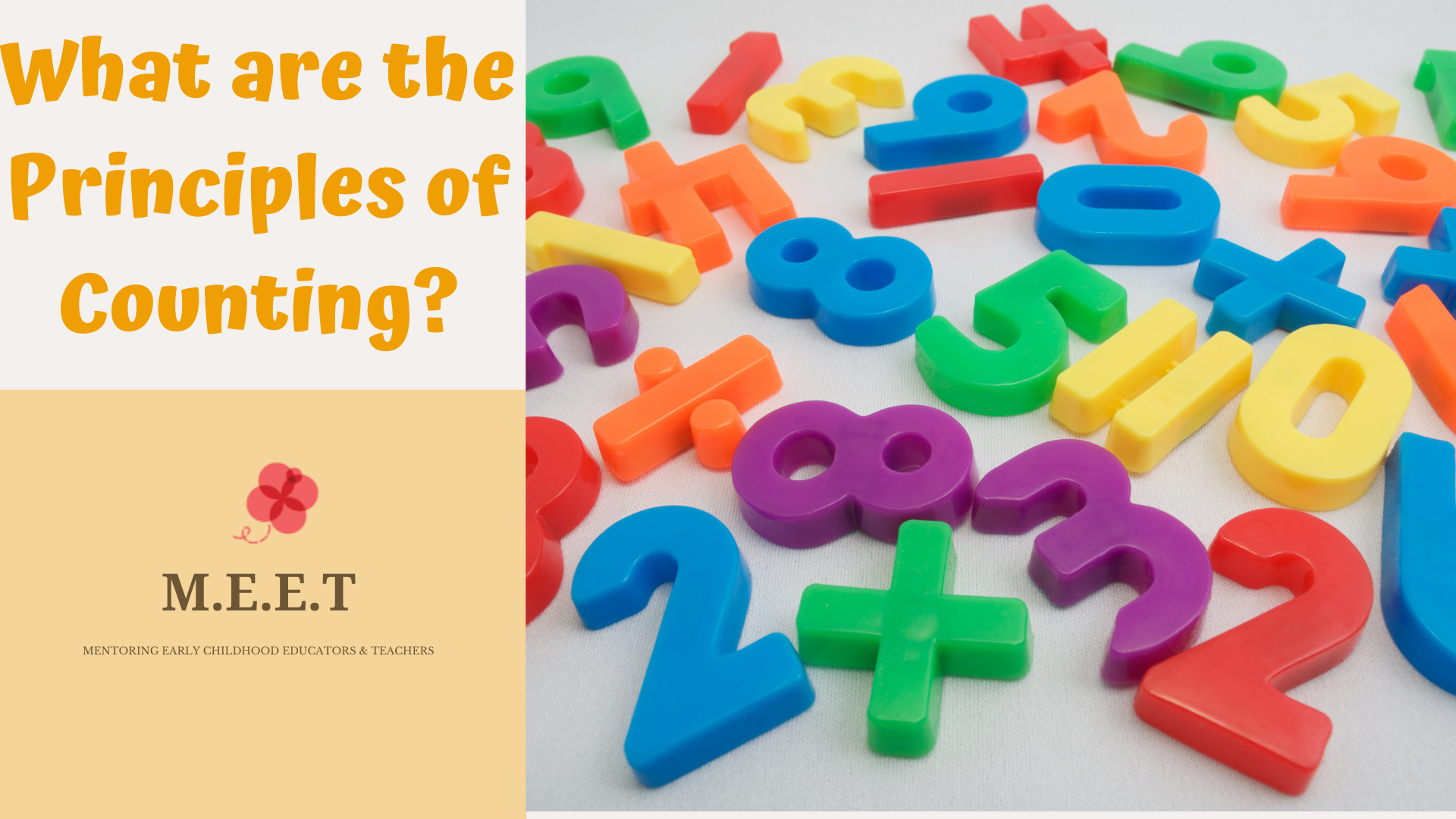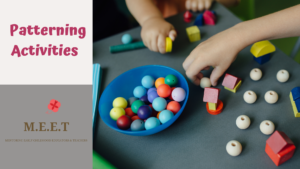Description
There are 5 counting principles, 3 of which are absolutely essential. The first two go hand in hand.
Stable Order i.e. the children need to know their number names in order. So you will begin your counting with number 1 and then move forward and count 2,3,4,5,6. With practice children will learn that the order of number names does not change. So sing all your number rhymes with your children, provide lots of manipulatives to count and model counting.
One to One Correspondence is the next principle you combine stable order. As young children learn to count they must remember to match each object with only one number name. This process in known as one to one correspondence. In your child care settings or at home you will observe that children count an object more than once and therefore making a mistake. To overcome this, use objects children can manipulate, place them in a container and ask the children to count them as they remove them. This will reduce the possibility of children recounting the objects and they will associate 1 number name with one object. We also use one to one correspondence when we compare two groups of objects. For example, if there are 4 tea cups and each cup has a saucer then you know there are 4 saucers as well.
Cardinality- In mathematics, the cardinality of a set is a measure of the “number of elements” of the set. For example, if you look at a collection of apples how do you know how many there are? Well, you count them. When you count, the last number name you say; tells you the total number in the group. Children need to learn the last number they say tells them the property of the whole group. It answers the question how many? In mathematics we call this property of a group it’s cardinality. For example, the cardinality of the collection of apples is 7 as the last counting number we gave to this collection was seven.
How can you as teachers and parents encourage this understanding of cardinality in children? Well, we need to provide repeated counting encounters.
The last two principles are demonstrated by efficient counters. The first is “abstraction” which means you can count any set of objects even if they may not necessarily look similar. So if there are a few blocks, and a few pebbles as well as some counters and we decide to make them all as one set we can count them as a whole. Abstraction also means that we can count things that we may not be able to see or touch for example how many times can you hear the beat of a drum? How many shadows can you see? As children progress they will realize there are certain things we can count and cannot count. For example, we cannot count air, or water.
The last counting principle is order irrelevance. As your children gain experience with count they will soon realize that it does not matter where they begin counting, they also learn that the order they begin counting the objects does not affect the quantity i.e. it is irrelevant. So as teachers and parents we need to provide children with lots of objects they can touch and feel. Demonstrate counting, encouraging them to count starting from a different object in the same group every time.







Reviews
There are no reviews yet.